
Slab-built plates are super fun to make because of the wide-open, blank canvas for decoration. They also can be a lot more efficient to make for a busy potter because there is a lot less clay scrap to recycle.
Galen Sedberry has come up with a very efficient system for his slab-built plates, and this efficiency doesn’t require sacrificing beauty. In today’s post, an excerpt from the November/December 2022 issue of Pottery Making Illustrated, Galen shares his process.
As a second-generation potter and the son of a prolific plate maker, I grew up in a household that used exclusively handmade dinnerware at meal times. After becoming a maker myself, I wanted to continue and propel that celebration of daily ritual with others.
I set out making slab-plate forms about four years ago in response to the question: How do I produce a consistent form in the most efficient manner both in construction and firing? Typically, thrown plates require the cutting of a foot ring—producing a burdensome amount of scrap clay that then needs to be recycled. Plates can also require a less-than-efficient use of stacking space within a kiln, potentially becoming a limiting factor when considering the finishing process of work. I have found the following method of plate making and firing to offer one solution to these hurdles.
Rolling the Slab
Start by rolling out a slab to approximately ½ inch in thickness using a slab roller. This can also be accomplished with a rolling pin and two dowels of equal thickness. I usually roll slabs large enough to make four or five plates at a time. Using a rubber rib, thoroughly compress one side of the slab before flipping it over and compressing the other side (1). Compressing the slab ensures a smooth surface as well as strengthening the clay in order to prevent drying and stress cracks later on.
Using a thick-gauge paper template, cut out the basic triangular plate shape from the slab (2). Make sure to remove all the scrap pieces of slab from between and around the cut plate shapes, wedge, and then wrap them in plastic to be used later in the process.
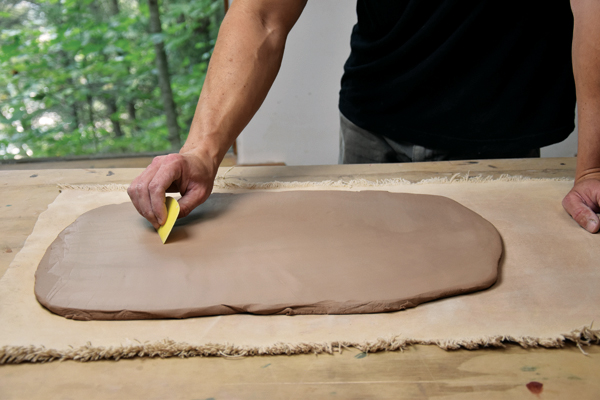
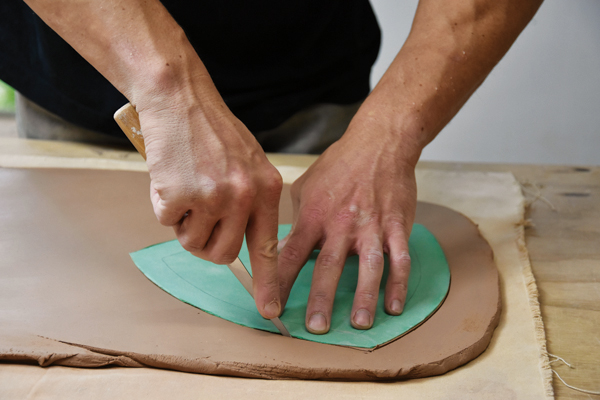
Transferring to the Bisques Mold
I like to leave the slab shapes out to dry for at least a few hours to stiffen slightly before transferring to the mold, allowing for a workability that is less prone to denting and ripping while handling. The hump molds I use can be handmade simply by throwing a large plate form with the interior curve or throwing a large dish and then trimming the same curve on the back side in lieu of a foot ring. Once you have an original shape you are happy with, multiples can be made from it once bisque fired.
Using concentric rings that have been applied to the bisque mold with a marker, center the triangle shape on the mold by making sure the tips of the triangle overlap the ring evenly on all three sides (3). Using a handheld wooden roller, gently push the clay down toward the bisque mold (4) in order to generate a little bit of clay memory, which will prevent the plate from flattening and twisting while drying.
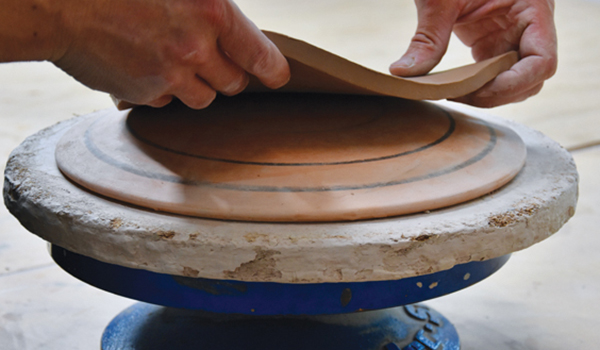
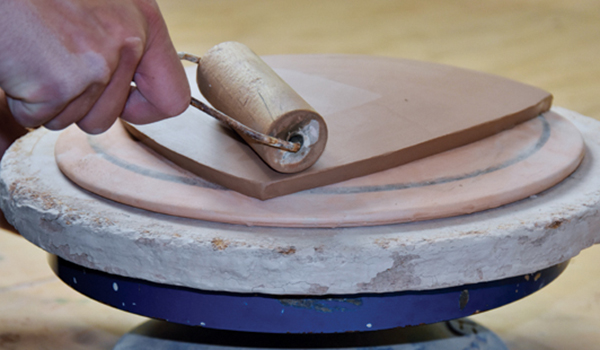
Throwing the Foot Ring
Using a grip for your wheel head, or using the tap-to-center method and clay lugs, center and secure the mold to the wheel. Next, wedge the clay from the slab scrap, then extrude or roll out a coil to approximately 18 inches in length. Prior to placing the coil onto the slab, use a serrated rib to score an approximate ring on the back side of the plate (5). Scoring this ring helps both to center the foot ring on the back of the plate, as well as making a secure connection between coil and slab.
Loop the coil on top of the slab and cut off the excess on a steep-angled bevel (6). Make sure to cut the bevel in the same direction as the spin of the wheel head, ensuring your fingers are compressing the attachment point during throwing. Using a sponge and a light amount of water, gently compress and center the coil before using the tip of your finger to move a small roll of clay down both sides in order to blend the foot ring into the slab (7). Then, make sure to round off the top of the foot ring in order to prevent any sharp edges. Wait until the plate is a soft leather-hard consistency before removing it from the mold and placing the foot ring down on a table to equalize for a day.
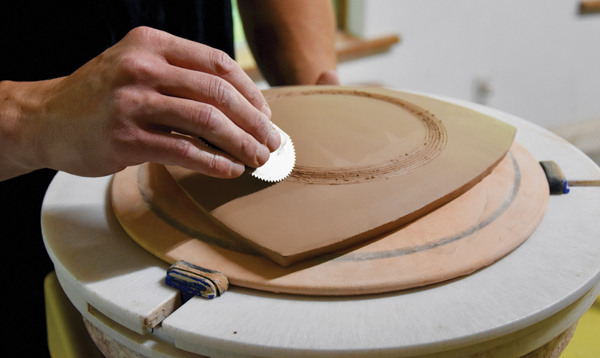
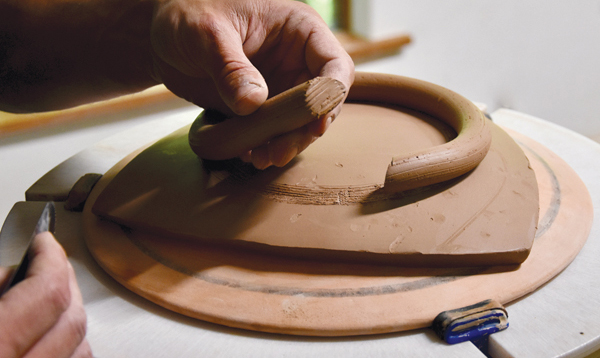
Final Shaping
Once the plate (including the foot ring) is leather hard, place it on a banding wheel and shape it using a metal rasp (8). Round off the points of the triangular shape and take off any sharp edges around the sides. As I see these plates as true daily-use pots, removing any sharp edges reduces the risk of chipping over time. Finally, use a soft rubber rib to do a final shaping and softening of edges, and to remove any marks left by the metal rasp.
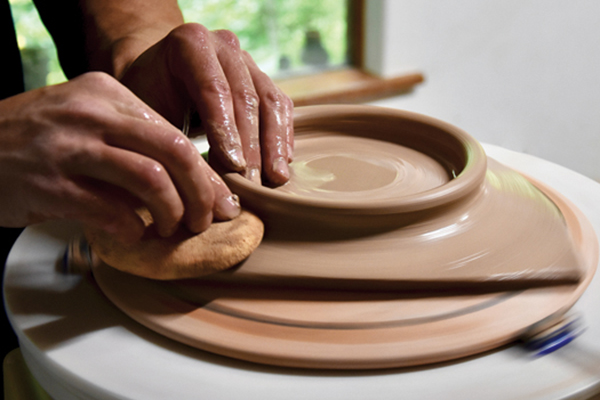

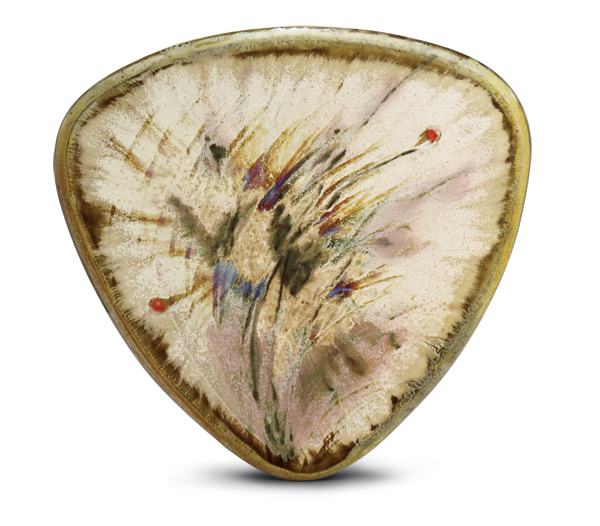
Galen Sedberry is a second-generation studio potter living in western North Carolina. To see more, check out @galensedberry on Instagram, or visit www.sedberrypottery.com.






